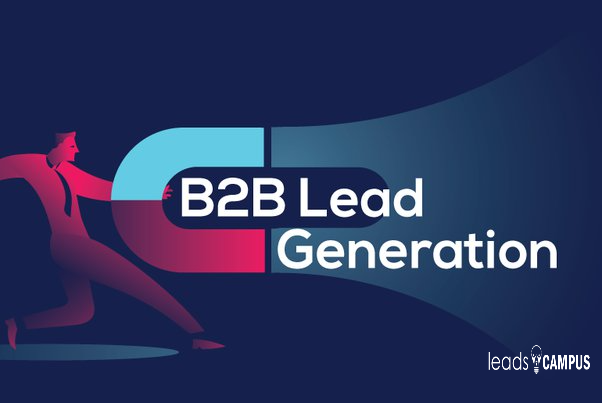Lead creation is an essential part of business growth in the fiercely competitive marketplace of today. For B2B businesses, this process of nurturing quality prospects to turn them into leads is essential for client expansion.
It’s impossible to overlook the changes lead generation has undergone recently as a result of the global epidemic as we look ahead to 2022. First off, there has been a significant movement toward digital forms of engagement, which has only helped to raise consumer awareness and encourage more autonomous problem-solving.

In light of this, it’s essential for businesses to have a thorough and all-encompassing lead generation plan in order to raise awareness and attract new customers. This article will discuss the most recent developments in B2B lead generation and how advertisers may take advantage of them to position themselves for achievement in 2022.
- Utilize data to prioritize quality over quantity.
Without a doubt, during the past few years, data and analytics have become more and more significant. The advantages are obvious, and the B2B sector is not an exception. According to a McKinsey study, businesses are 1.5 times more likely than their counterparts to have above-average growth rates if they employ analytics in marketing and sales efficiently.
Clarifying everyone’s strategy involves concentrating on the caliber of leads in the pipeline as opposed to just growing their quantity. We call this kind of data “intent data” since you are using it to proactively identify decision-makers who are likely to make a purchase and better understand their thought process.
This strategy can be challenging to implement if your lead generation system is clogged with a tonne of unneeded or unstructured data. One of the biggest and most well-known supplemental insurance providers in America, Aflac, dealt with this problem. The sales staff didn’t have a clear knowledge of the metrics without a consolidated lead system. The organization saw an increase in qualifying leads with the implementation of a solitary, central system to speed prospecting and an emphasis on clean data, leading to the creation of over 2.1 million leads and 7,073 meetings with decision-makers to discuss enrollments.
- Improve the coordination between sales and marketing
Efforts between marketing and sales are not segregated in truly effective lead-generating systems. Instead, to engage prospects and ultimately keep them, these two sectors must work together seamlessly.
This may be easier said than done, of course. “Coming together is a beginning; remaining together is a journey; working together is a success,” as Henry Ford famously said. According to a recent Forrester survey, managing data and insights across organizational silos is the biggest difficulty businesses face in terms of sales and marketing.
Remember that communication is the key if your business is still struggling to establish its feet in this situation. Ensuring that sales and marketing share the same definition of a quality lead is a good place to start. Since each business must determine what qualifies a lead, there isn’t a single definition that applies to all of them. Organizations can develop a precise definition of what a “qualified lead” is when sales and marketing collaborate. After that, communication must take place between the two departments to guarantee that this qualified lead is appropriately targeted and moved through the pipeline.
- Keep your target market in mind.
Lead generation is ultimately about starting a discussion with the appropriate individual, not just any person. Reaching your target audience should be your main priority from the start because they are the ones most likely to become clients. This is being emphasized more than ever before.
You want to get the most out of your money, especially for small to midsize firms. If your product or service is aimed toward young professionals who live in the city, you’ll want to gear your entire lead generation around that group.
Generally speaking, adopting an audience-focused strategy gives you a competitive advantage, can support growing customer engagement, and can boost conversions. According to Deloitte research, businesses that put a strong emphasis on the audience are 60 percent more profitable than those that don’t.
Even if you are certain of who your target market is, it might be difficult to narrow down your strategy by making sense of the data that is available from various departments. The following are some ways that Data Axle’s Lead Generation services streamline that procedure:
. Utilizing our top-tier business database to validate and improve leads
. Writing emails that are approved for B2B use
. Account-based marketing (ABM) lists that are comprehensive
. utilizing data from our B2C Link database to offer a special understanding of your target that blends traits of businesses and consumers